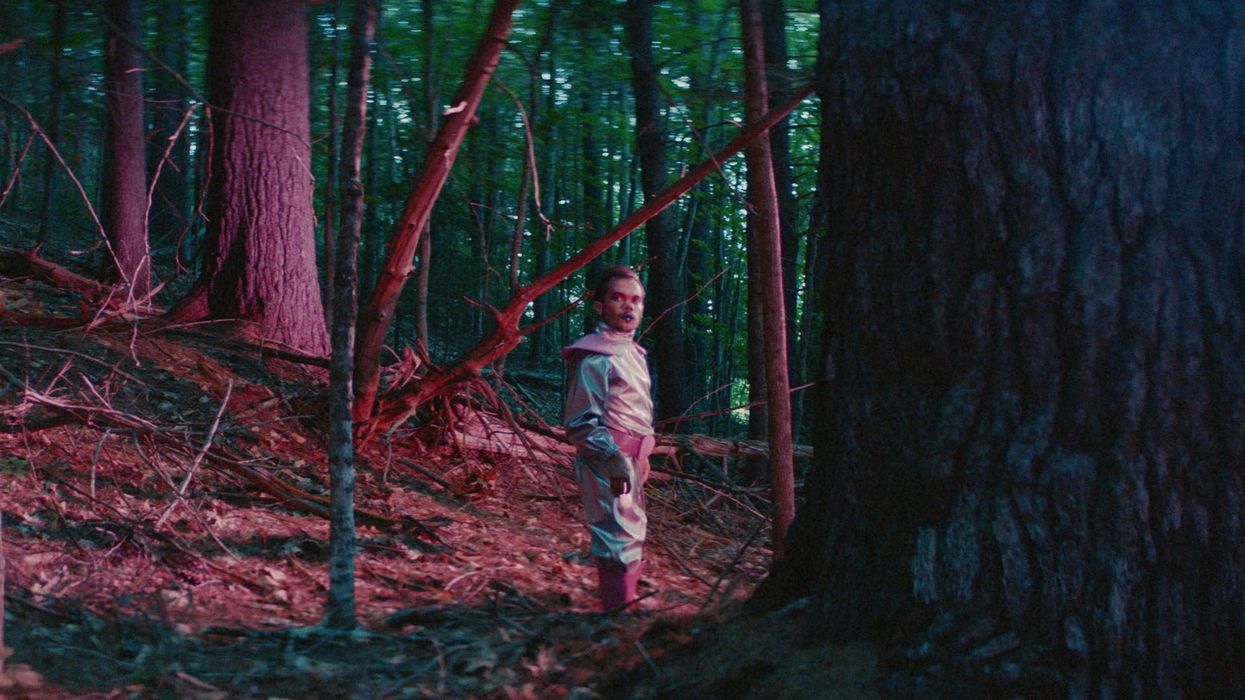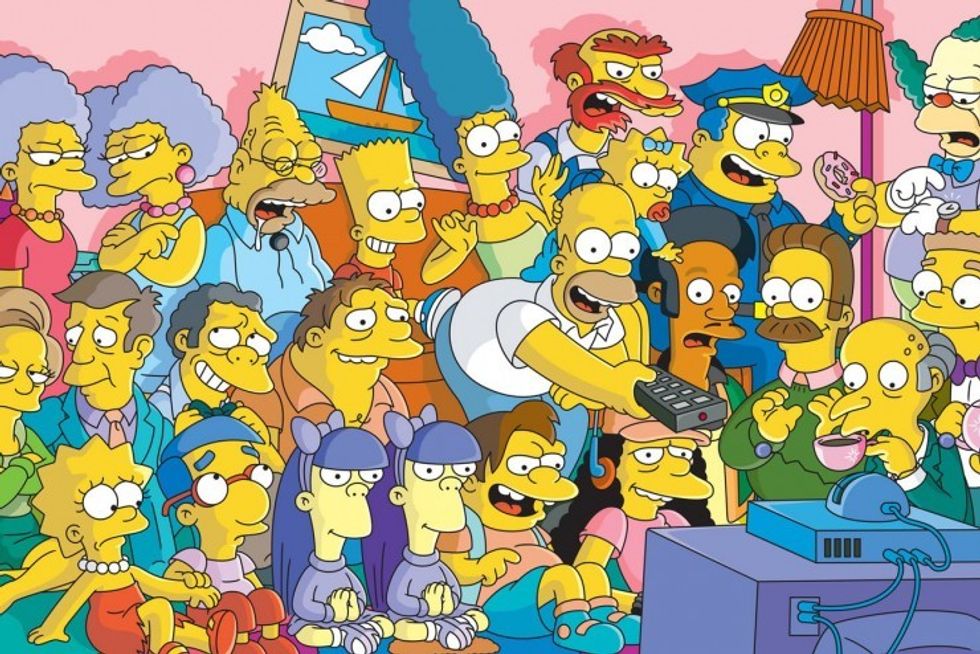8 Lessons Learned Going From Concept to Production in Under 4 Months
Unidentified Objects was a learning experience.

This post was written by Juan Felipe Zuleta.
If you knew you would struggle every day for three years, making your first feature film, without any guarantees of anything, knowing that it is very likely no one would ever see it, and you won’t make any money from it, would you still make it?
If you are willing to jump into the abyss because you believe in your vision, yourself, and your team, then in this collection of thoughts, I want to shine some perspective from my own experiences facing the extremely intimidating world of independent filmmaking.
Hopefully, they help you on your journey.

1. Pivoting
My writing partner, Leland Frankel, and I spent six years perfecting our first script together.
We worked hard, courted producers, raised a conditional budget, then lost everything when the COVID-19 pandemic struck. We were back at square one overnight, unemployed, and not-so-steadily going stir-crazy in quarantine.
I asked Leland to collaborate on a new short film that I had been toying with about—what else?—a man who uncontrollably shrinks and grows while trapped in his cramped apartment. A few weeks in, as we realized our little short was going to cost more than $90,000 to produce, my friend—the very talented cinematographer, Camilo Monsalve— asked the question that kickstarted Unidentified Objects.
“Would you rather shoot a high-budget short or a low-budget feature?”
“I would rather shoot a feature.”
2. Not asking for permission
Don’t wait for it. No one will ever give you “permission” to make your movie. If you know in your bones that you have to make it, make it.
Producers, salespeople, festival jury members… this is an industry filled with gatekeepers. If you need—not want, need—to make your movie, then you have to make it. Zero excuses. Not in that Instagram slogan “Rise and grind!” kind of a way. I mean just to be practical because the truth is that no matter how brilliant your script is, the odds are not in your favor.
Fundraising, paperwork, contract negotiations… for me, it all had to happen at the same time as the creative process. And thankfully, the people close to me who I trust and rely on were willing to jump on board the crazy train with me. We all bet on ourselves. They placed a bet on this project and me.
If I had to choose one thing, this is perhaps the most critical ingredient of filmmaking.
3. Family away from home
I immigrated to the United States (from Medellín, Colombia) as a teenager to enroll in community college. My dream was to make movies. But the film industry in my home country is more limited than here. So I left everything I knew behind and, after a few years, wound up in film school in New York City.
While studying, I took every PA gig that came my way and explored every film-related opportunity that I could. On set, I made friends with some of the best creatives and crew on the east coast: Production managers, camera assistants, and sound designers. But I also was able to meet some big-time directors and creative execs. I still can’t believe I earned my first studio internship on a soccer field and met my first financing mentor at a bar in NYC. In fact, I met Leland (a UCLA student at the time) by asking a UCLA-transfer-to-NYU if he happened to know the incredibly talented writer of a script I had just read. Life has put me on a very winding path, but it’s also left me with breadcrumbs that I’ve realized are very important to follow.
It is this network and those mentors that were there for me when all commercial production froze during the early days of the pandemic. These were the collaborators who were willing to take a look at a 25-year-old Colombian’s film idea. They knew me both as a friend and as an artist.
4. Designing for the circumstances
When we decided to make a feature instead of a short, our biggest challenge was time.
We had already set a 15-day window when our crew would be free for the short. Now, we needed to convert all those days for filming the feature and be fully production-ready in less than four months.
Working smart—on top of fast, of course—was the only way we’d meet the deadline.
For example, Maine was a strategic choice for the set, not just for its aesthetic value. There was only one COVID-19 case there at the time. We could take over a lakeside motel and operate nearly entirely within our own bubble. There’s enough variety in the terrain there that we could avoid changing Base Camps, and increasing the risk of adding people to our Covid bubble.
Our circumstances limited our universe of possibilities, but they also become sources of creative inspiration and decision-making.
5. Trusting heart and commitment over resume
We drove six hours from New York City to Maine for our location scout, staying in the scuzziest fleabag motels and dealing with harassment from a few ultra-conservative locals. This was when I realized my first AD—arguably the most important person on any filmmaker’s team—was just not up to the job for a variety of reasons.
Despite the fact that we had been working with him all throughout pre-production, I decided to replace him less than a week before shooting. He had been highly–qualified on paper. But with a low-budget film, you do not necessarily need the most “experienced” person. You need the right person. It was a decision that paid off.
Our new assistant director, Paola Ossa, became an essential part of why we were able to accomplish so much so efficiently. She had already shown her hunger and work ethic on the production team, and we knew she’d move heaven and earth for this shot to step up. It was a “risky” decision that we had full faith in.

6. Decisiveness for the sake of the film
Two days before wrapping production, we were shooting outside in Queens, NY. The light refused to cooperate even after we wasted almost three hours diffusing off our set. It was sizzling hot, we were exhausted, and even a passing ice cream did not boost morale or fix the schedule.
Any hesitation and the pivotal scene would fall apart. Actually, worse. It would never exist in the first place.
I had to decide what the scene really needed to work, at its most stripped-down level. That means making the decision to trim more than half the dialogue, ditch any equipment that was in the way, toss out the shot list, and experiment with a new handheld visual approach. Huge, but necessary changes in just a few minutes.
Not only did our full-throttle, semi-improvised approach work, but it also gave us the boost we needed to get through the rest of the day in high spirits.
Every filmmaker needs to know deep down what matters most for their movie. What is your vision? What is this scene about? What matters here? Being precious about preserving everything exactly the way you initially imagined is a good way to wind up with nothing at all. Especially on a low budget, you have to be more than strategic and practical. You also have to be honest about what will genuinely make or break your project. Your personal emotions matter less than the fate of the film.
7. Looking for support at every corner
Festivals are one of the best resources for aspiring filmmakers. But for our team, the festivals we attended were also a punch in the gut because the world is packed with brilliant films by genius artists. Many of the films we enjoyed would never be seen by more than a few hundred people. Making a movie is hard. Selling and distributing a movie is almost impossible.
Our festival and distribution journey was the reverse of what a lot of people expected. Instead of a premiere at Sundance or Cannes, we started small and snowballed. I realized that while I knew enough to make a movie, I knew much less about putting one out there. So piece by piece, we expanded our team to include new mentors and partners who were more experienced.
As a result, we eventually secured the Narrative Centerpiece slot at the largest LGTBQ film festival in the world and won two top prizes. This was the turning point. Screenings at bigger festivals followed, and distribution conversations finally began shortly after.
Go to festivals, even the ones you don’t get into. Meet people. Build connections. Seek out mentorship. Rejection from a prestigious school, lab, or festival is normal. Experiencing that pain can make you stronger and more resilient. Resilience is the most important ingredient to push through creating your first movie.
8. Making it past the finish line
At the end of the day, the only thing you really have when making a movie is your team, your vision, and yourself. It is those components that bring everything else.
What’s interesting is that even once you’ve delivered a finished film, you still only have your team, your vision, and yourself (and maybe an audience to appreciate the work you did together). The hope, or my hope, at least, is that the team, the vision, and you are all changed for the better on the other side of that finish line.
This post was written by Juan Felipe Zuleta.
He is an award-winning filmmaker based in New York City. His debut feature film “Unidentified Objects” will be released theatrically by Quiver Distribution on June 2nd, 2023 followed by a wider digital release on June 9th.














